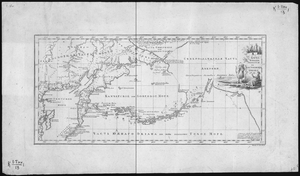Mikhail Gvozdev facts for kids
Mikhail Spiridonovich Gvozdev (Russian: Михаи́л Спиридо́нович Гво́здев) was a Russian military mapmaker. He was born around 1700 and lived until after 1759. Gvozdev is famous for leading an expedition to northern Alaska in 1732. This was the first time Russians ever saw the Alaskan coast.
Contents
Who Was Mikhail Gvozdev?
Mikhail Gvozdev was a geodesist, which means he was an expert in measuring and mapping the Earth. He was part of the Russian military. His skills were very important for exploring new lands and drawing accurate maps.
Exploring Alaska
In 1732, Gvozdev joined a voyage with other explorers. These included navigators Ivan Fedorov and K. Moshkov. They sailed on a ship called Sviatoi Gavriil, which means St. Gabriel.
Their journey took them to Dezhnev Cape. This is the easternmost point of Asia. From there, they got more water for their ship on August 5. Then, the Sviatoi Gavriil sailed east across the sea.
First Sight of America
Soon, they came close to the American mainland. They reached Cape Prince of Wales in Alaska. This was a very important moment in history. They carefully mapped the northwestern coast of Alaska. They also drew their entire route on a map.
By doing this, Fyodorov and Gvozdev finished a big discovery. They completed the mapping of the Bering Strait. This important strait had been partly explored before. Explorers like Dezhnyov and Fedot Popov started the work. Later, Vitus Bering continued it. Gvozdev and Fyodorov helped connect all these discoveries.
Mapping Other Lands
Gvozdev continued his exploration work. From 1741 to 1742, he took part in another expedition. This journey was led by Alexey Shelting.
During this time, Gvozdev mapped many areas. He drew maps of most of the western and southern shores of the Sea of Okhotsk. He also mapped the eastern shore of Sakhalin island.
Legacy
Mikhail Gvozdev's work was very important for understanding the geography of the world. Because of his contributions, a cape on Sakhalin island is named after him. It helps people remember his discoveries.
See also
 In Spanish: Mijaíl Gvózdev para niños
In Spanish: Mijaíl Gvózdev para niños


